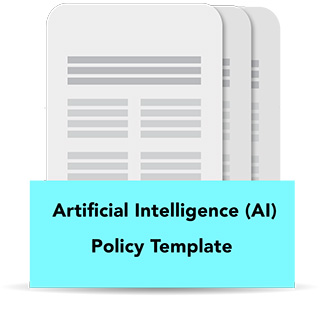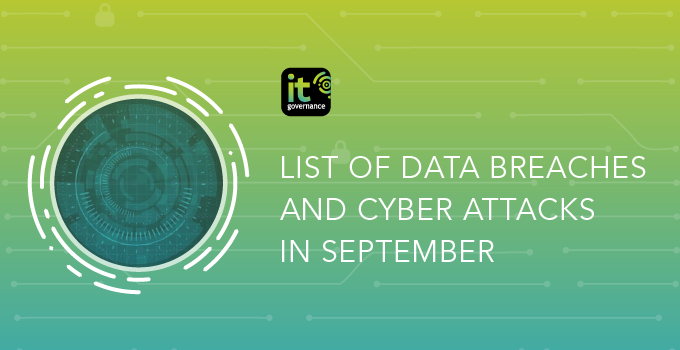Looking to integrate AI (artificial intelligence) into your business operations but unsure where to start, or how to navigate the challenges?
You’re not alone.
Many organisations recognise the potential of AI tools, such as ChatGPT, to streamline operations and provide a competitive edge.
Adopting AI technology, however, comes with its own set of challenges – such as ensuring the accuracy of AI-generated information, maintaining the quality of AI outputs and addressing ethical concerns.
That’s where a well-thought-out AI policy comes into play. This type of policy prepares your organisation to thrive in the rapidly evolving AI landscape.
In this guide
- What is an AI policy?
- Why do you need an AI policy?
- Developing your AI policy: six steps
- Navigating challenges in AI policy implementation
What is an AI policy?
Think of an AI policy as a roadmap that guides your organisation in adopting and managing AI technology responsibly. It typically addresses the following:
Ethical guidelines
Principles to ensure AI systems are developed and used fairly and responsibly, avoiding biases and discrimination.
Data management protocols
Procedures to protect the privacy, security and integrity of the data used by AI systems.
Legal and regulatory compliance
Steps to ensure your organisation adheres to current and evolving legal requirements related to AI technologies.
AI system testing and evaluation
Methods for assessing the performance, accuracy and reliability of AI systems, accompanied by monitoring and regular updates.
Responsible use principles
Standards for daily operations that promote the responsible and ethical use of AI technology.
Why do you need an AI policy?
An AI policy is vital for your organisation’s success for three key reasons:
1. Ensuring ethical AI usage
A robust AI policy helps your organisation prevent the unethical application of AI, such as biased decisions or discrimination in hiring. For example, Amazon faced public backlash for using an AI hiring tool that discriminated against women.
By aligning AI technology usage with your organisation’s values, industry standards and societal expectations, an effective AI policy promotes responsible AI practices.
2. Legal and regulatory compliance
With AI regulations developing rapidly worldwide, such as the EU’s 2023 Artificial Intelligence Act, organisations must stay up to date. Non-compliance can result in significant fines and reputational damage.
Adopting an AI policy helps your organisation adhere to current laws and regulatory requirements, protecting its legal standing.
3. Protecting data privacy
Building and maintaining customer trust is vital for long-term success, and a significant aspect of that trust relies on robust data security measures.
An AI policy helps your organisation manage data privacy in accordance with regulatory guidelines, such as the GDPR (General Data Protection Regulation), bolstering customer confidence and loyalty.
Enjoying this blog, and want to be notified of future posts? Subscribe to our free weekly newsletter: the Security Spotlight.
Developing your AI policy: six steps
Step 1: Engage with stakeholders
Collaborate with key teams, including IT, legal, ethics and operations, and consult external AI experts.
This holistic approach to discussing AI’s benefits, risks, best practices and legal implications ensures your AI policy addresses your organisation’s needs and concerns.
Step 2: Define AI principles and objectives
Define principles, such as ethics, transparency, privacy and security, that align with your business values and industry-specific requirements. Set specific, attainable goals for AI usage.
For example, you could aim to increase sales by adopting AI-generated product recommendations for personalised marketing.
Step 3: Stay informed about the regulatory landscape
Keep up with the latest AI regulations by subscribing to industry newsletters, consulting legal experts and participating in professional networks.
Familiarise yourself with important regulations, like the EU AI Act, the UK 2023 AI white paper and the US 2023 Executive Order on AI, to ensure ethical and trustworthy AI adoption.
Step 4: Draft a preliminary policy framework
Create a framework reflecting your AI principles, including ethical guidelines, data governance rules and the potential implications of AI systems for your workforce.
Ensure it covers compliance with current laws and outlines policy implementation and maintenance.
Step 5: Secure leadership support and budget
Encourage company leaders to champion the AI policy and emphasise its importance to the future success and reputation of the organisation.
Present the draft policy to your organisation’s leadership and secure funding for policy execution, including resources for training, software and audits.
Step 6: Iterate, finalise and implement
Gather stakeholder feedback, refine your policy and establish a periodic review process.
Launch a training programme for policy implementation and ensure your AI policy remains up to date with advancements in AI technology and emerging regulatory requirements.
Navigating challenges in AI policy implementation
Implementing an AI policy can present challenges, but the following strategic approaches can help overcome them:
Tackle technical complexity
Complex AI concepts can be daunting, but breaking them down and using helpful resources, such as our AI Policy Template, can streamline the process and build a strong foundation for your policy implementation.
Overcome resource limitations
Ensure leadership continues to give support for necessary resources. Adopt a phased approach to policy implementation, prioritising key aspects while managing costs effectively.
Additionally, explore partnerships with AI service providers to save on resources and enhance AI capabilities.
Address resistance to change
Encourage an accepting and adaptable workforce by involving employees in the policy creation process.
Clearly communicate the benefits of AI for your organisation and provide training resources to help staff embrace the changes brought by AI technology and your policy.
Ready to implement your AI policy?
Ready to harness the potential of AI in a responsible and compliant manner, and implement your AI policy?
Let us help you streamline the process.
Our AI Policy Template offers a customisable, efficient solution for SMEs.
The post Creating an AI Policy – A Guide for SMEs appeared first on IT Governance UK Blog.




